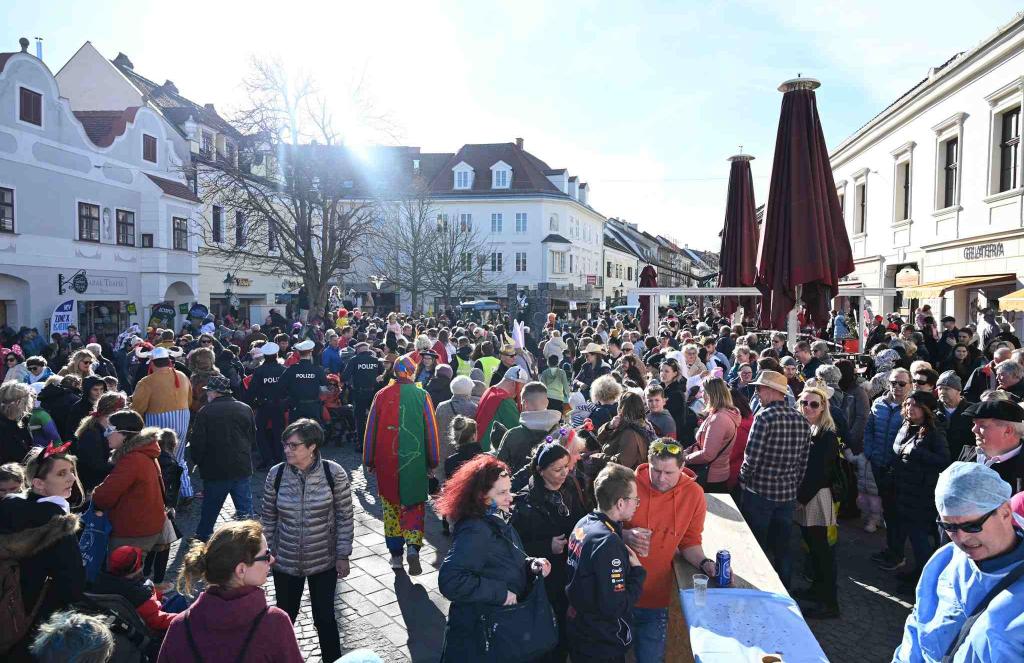Thessaloniki gets ready for its metro launch in November
The underground rapid transit lines have been under construction for almost two decades due to various project delays
 TheMayor.EU logo
TheMayor.EU logo 
Faschingdienstag (Pancake Day) 2023 with a carnival in central Eisenstadt, Source: City of Eisenstadt on Facebook
The municipal measures can be described as a seven-step programme to success
Two years ago, the Austrian city of Eisenstadt was faced with a well-known trend, especially for smaller urban communities (it has a population of around 14,000 people) – the so-called ‘Death of High Street’. This is a phenomenon by which online shopping or edge-of-town large retailers redirect the flow of people away from the city centre.
This could, in turn, lead to negative outcomes for legacy services and retailers located in an area’s historic shopping centre, causing a wave of bankruptcies among small and medium-sized businesses, leaving the town with a less diverse job market, and workers – with fewer competitive options.
According to Eisenstadt’s mayor, Thomas Steiner, his town was going through this process, and local politicians had to intervene with a comprehensive strategy to reverse the trend. The authorities claim that Eisenstadt’s pedestrian zone had 18 vacant shops out of 69 seven years ago. Today, that number is six.
One of the first measures the city started with was improving urban spaces and increasing the quality of experience. This included planting 18 new trees and renovating benches and monuments. Second came improving the accessibility to the city centre. Here authorities increased the frequency of the buses and made them free between September and December of 2022.
Next came the creation of a city and location marketing service which includes vacancy management. It has been operational since 2022, managing the shops and organising shopping events as marketing campaigns.
The fourth measure was issuing the Eisenstadt vouchers, with a total value of 400,000 euros. The coupons were distributed among citizens with the idea to keep some of the citizens' purchasing power in the urban area, rather than letting it go to international online retailers.
The fifth measure was aimed at bringing back life to the urban centre of Eisenstadt with low-threshold events. The city has organised 60 event days and 60 market days in the downtown area in 2022 alone.
The sixth measure was stopping the collection of a sidewalk fee, which can boost cafés, restaurants and retailers who can have better access to pedestrian traffic and more direct contact with customers.
The last measure was aimed at people starting businesses. Here, local authorities give out bonuses to new businesses in their first three years of existence. Eisenstadt offers 500 euros per month to a new business during the first year, 300 during the second and 200 during the third. If the start-up is in a new field, that does not already exist in the city centre, the bonus for the first year is double (1,000 euros).
All in all, officials estimate that the seven-step programme cost around one million euros.
The newest addition to the city’s package is a digital counter to monitor the number of people passing through the pedestrian zone. This would let authorities track the interest of locals and measure the success of different initiatives more accurately.
The first measurement recorded 7,000 visitors on Faschingdienstag, also known as Pancake Day – on 21 February. This, for comparison, is nearly half of all Eisenstadt residents.

The underground rapid transit lines have been under construction for almost two decades due to various project delays

Now you can get your wine in Talence by paying directly in Bitcoin

That’s because the state has to spend money on updating the railway infrastructure rather than subsidizing the cost of the popular pass

Rethinking renewable energy sources for the urban landscape

The examples, compiled by Beyond Fossil Fuels, can inform and inspire communities and entrepreneurs that still feel trepidation at the prospect of energy transition

Now you can get your wine in Talence by paying directly in Bitcoin

The 10th European Conference on Sustainable Cities and Towns (ESCT) sets the stage for stronger cooperation between the EU, national and local level to fast track Europe's transition to climate neutrality.

At least, that’s the promise made by the mayor of Paris, Anne Hidalgo

The underground rapid transit lines have been under construction for almost two decades due to various project delays

At least, that’s the promise made by the mayor of Paris, Anne Hidalgo

Hostal de Pinós is located in the geographical centre of the autonomous region

Despite its church-y name, the district has long been known as the hangout spot for the artsy crowds

Urban dwellers across the EU are having a say in making their surroundings friendlier to people and the environment.

Forests in the EU can help green the European construction industry and bolster a continent-wide push for architectural improvements.

Apply by 10 November and do your part for the transformation of European public spaces

An interview with the Mayor of a Polish city that seeks to reinvent itself

An interview with the newly elected ICLEI President and Mayor of Malmö

A conversation with the Mayor of Lisbon about the spirit and dimensions of innovation present in the Portuguese capital














